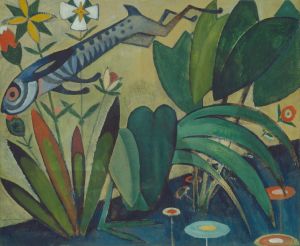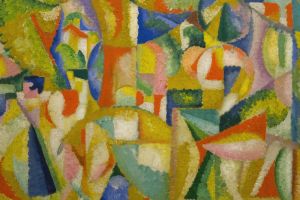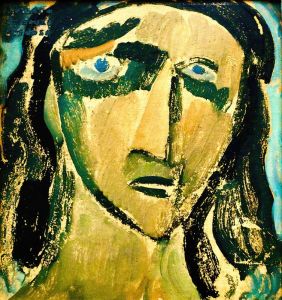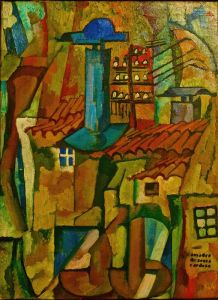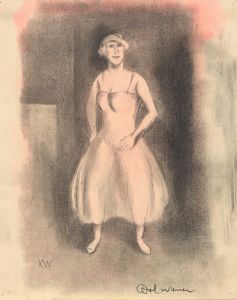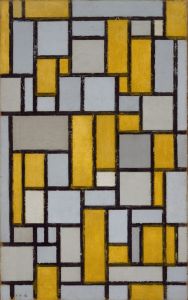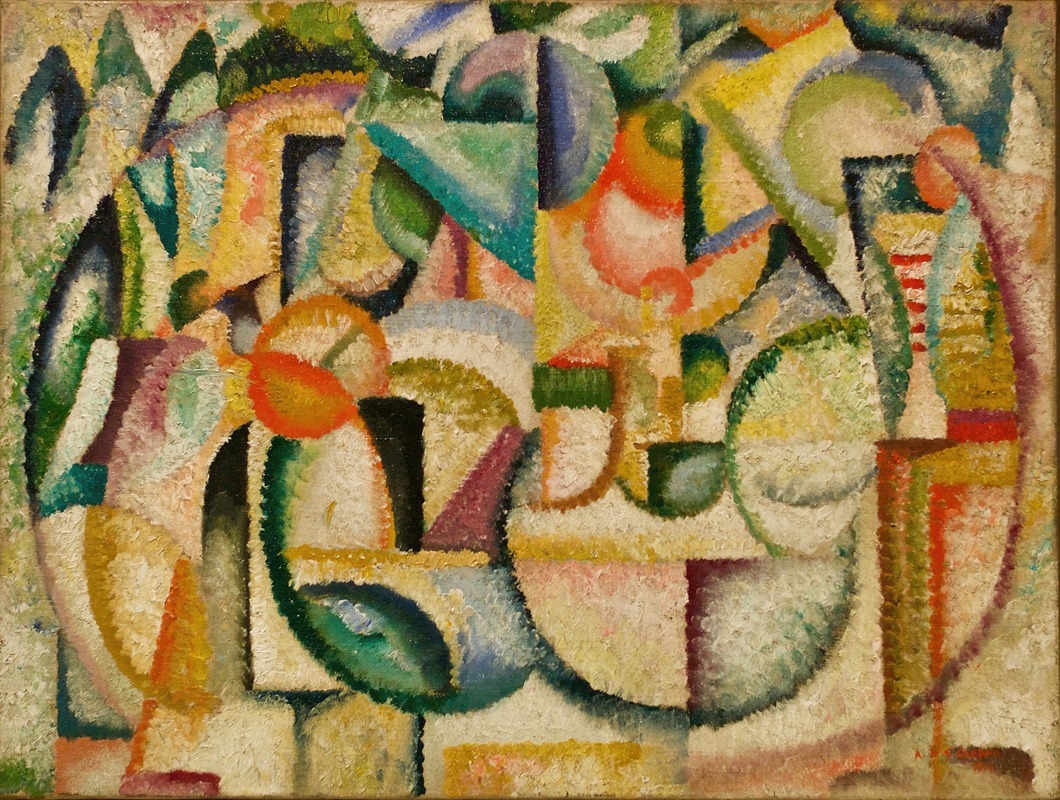
Study A
A hand-painted replica of Amadeo de Souza-Cardoso’s masterpiece Study A, meticulously crafted by professional artists to capture the true essence of the original. Each piece is created with museum-quality canvas and rare mineral pigments, carefully painted by experienced artists with delicate brushstrokes and rich, layered colors to perfectly recreate the texture of the original artwork. Unlike machine-printed reproductions, this hand-painted version brings the painting to life, infused with the artist’s emotions and skill in every stroke. Whether for personal collection or home decoration, it instantly elevates the artistic atmosphere of any space.
Amadeo de Souza-Cardoso (1887-1918) was a prominent Portuguese painter, known for his contributions to the early 20th-century modernist movement. His work is characterized by a dynamic synthesis of various avant-garde styles, including Cubism, Futurism, and Expressionism. One of his notable works is "Study A," which exemplifies his innovative approach to form and color.
"Study A" is a painting that reflects Souza-Cardoso's engagement with the modernist currents of his time. Created around 1913, this piece is a testament to his exploration of abstraction and his departure from traditional representational art. The painting features a complex interplay of geometric shapes and vibrant colors, which create a sense of movement and dynamism. This aligns with the broader trends in European modernism, where artists were increasingly interested in breaking away from realistic depictions and instead focusing on the intrinsic qualities of the medium.
Souza-Cardoso's "Study A" demonstrates his ability to integrate influences from various art movements. The use of fragmented forms and the emphasis on the flatness of the canvas are reminiscent of Cubism, a style pioneered by artists like Pablo Picasso and Georges Braque. However, Souza-Cardoso's application of color and his sense of rhythm also suggest an affinity with Futurism, an Italian movement that celebrated speed, technology, and modernity. The painting's vibrant palette and dynamic composition convey a sense of energy and movement, which are central themes in Futurist art.
The artist's background and experiences played a significant role in shaping his artistic vision. Born in Manhufe, Portugal, Souza-Cardoso moved to Paris in 1906, where he immersed himself in the vibrant artistic community. He befriended several key figures of the avant-garde, including Amedeo Modigliani, Constantin Brâncuși, and Sonia and Robert Delaunay. These interactions undoubtedly influenced his work, as he absorbed and reinterpreted the innovative ideas circulating in the Parisian art scene.
"Study A" is also notable for its experimental approach to composition. Souza-Cardoso often employed unconventional techniques to challenge the viewer's perception. In this painting, the arrangement of shapes and the juxtaposition of colors create a sense of depth and complexity, inviting viewers to engage with the work on a visual and intellectual level. This approach reflects the broader modernist interest in exploring new ways of seeing and representing the world.
Despite his relatively short career, Souza-Cardoso made a significant impact on the development of modern art in Portugal and beyond. His work was exhibited in several important exhibitions, including the 1913 Armory Show in New York, which introduced European modernist art to an American audience. "Study A" and other works by Souza-Cardoso continue to be celebrated for their innovative spirit and their contribution to the rich tapestry of early 20th-century art.
In summary, "Study A" by Amadeo de Souza-Cardoso is a compelling example of early modernist painting. It reflects the artist's engagement with contemporary avant-garde movements and his innovative approach to form and color. Through its dynamic composition and vibrant palette, the painting captures the essence of modernist experimentation and Souza-Cardoso's unique artistic vision.








